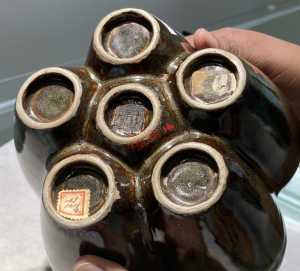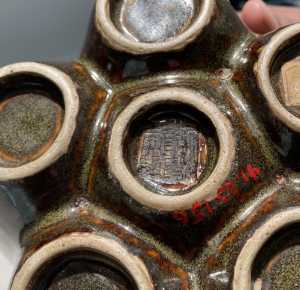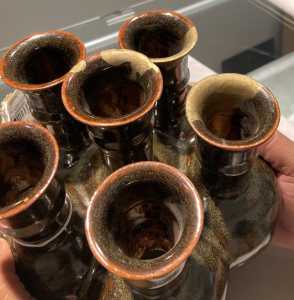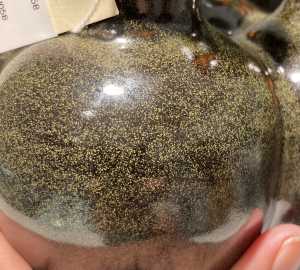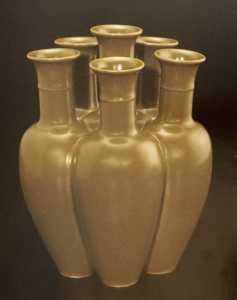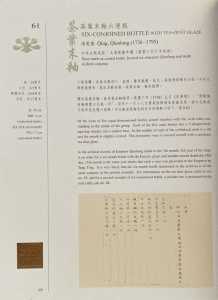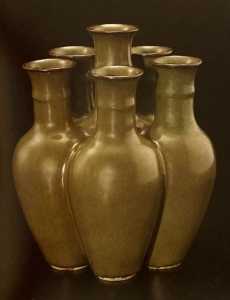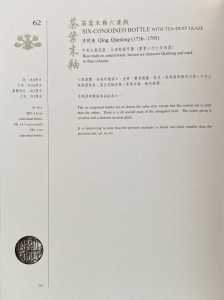The Chinese and Asian Art Forum. For Fans, Collectors and Dealers.
 Basic Rules For the BidAmount Asian Art Forum: Talk about whatever you want. You can even discuss and offer things that are for sale if they are authentic. Maximum image file size per post is 2 MB. Images of 700pxl x 700pxl are optimal if saved at a medium resolution. Be respectful of others and enjoy yourself. Click the YouTube link for a brief tutorial on using the forum. You can also EMBED Videos by cutting and pasting from You-Tube, Vimeo etc.
Basic Rules For the BidAmount Asian Art Forum: Talk about whatever you want. You can even discuss and offer things that are for sale if they are authentic. Maximum image file size per post is 2 MB. Images of 700pxl x 700pxl are optimal if saved at a medium resolution. Be respectful of others and enjoy yourself. Click the YouTube link for a brief tutorial on using the forum. You can also EMBED Videos by cutting and pasting from You-Tube, Vimeo etc.
NOTE: To post an item or add a new post, click open the category title from the FORUM LIST, and CLICK the Blue ADD TOPIC button.
Today I attended my first Christie’s preview! Yes, as surprising as it may seem, since I’ve only ever sold through them, I never made time to attend the preview.
So, let me start by saying I should have attended years ago - what I experience by handling all sorts of amazing antiques during a two hour period would have taken years to experience at smaller auction venues.
The Fall Asian week session is generally a smaller venue than Spring, but nevertheless there are some fantastic pieces that you can handle that otherwise you would only see through glass at a museum.
I think more importantly, because it is the smaller venue, there are many more 19th c pieces that are within buying reach (not cheap but under $10,000), and these are pieces that could be found outside of major collections at an estate sale or antique show.
I came today, Sunday, at 10:30AM because I thought I could avoid traffic… and I was right! Definitely will come on a Sunday at future events.
I suggest business casual dress. I was a bit too casual, but they didn’t throw me out.
I would plan your trip for 4 hours if you want to handle a lot of pieces (30-40).
To be honest, I was a bit nervous at first to be handling some of the big dollar pieces ($100,000 plus). So, the first hour I just eyeballed the entire exhibition until my nerves calmed a bit. Then I felt more comfortable.
So, my first trip through the exhibits, I asked myself as I viewed each item - Would I have recognized this piece as being ‘Christie’s’ quality if I saw it at my local antique shop?
Fortunately, most pieces I can say I would have known were good enough for Christie’s.
The cover piece, the Tang silver bowl with rhino in the center - I would have missed that.
It looked very old, but the rather simplistic rendering of the rhino, and the tarnished/scratched surface of the silver would have led to believe the bowl was a middle eastern tourist piece.
The jade pieces, with the exception of the archaic jades, despite having quite a lot of variation in colors, inclusions/fractures, and degree of carving, all were beautifully carved.
So, at the risk of over simplifying, if you’re considering buying jade and the carving is not extremely fine, no matter how nice the color appears, or signs of hand tooling, my suggestion is to walk away.
Now for porcelains….
I’m skipping over anything pre-Ming in this thread - I’ve got a lot to learn before I can make any credible assessments.
Most of the Ming and Qing pieces in this sale, condition wise, could easily pass as new in appearance.
The exception was with cloisonne which perhaps due to its fragile nature showed lots of age related wear.
I realize how popular it is in our forum to ask, ‘do you see signs of age & wear?’ However, I think this is a bad standard for us to use for authentication.
To be clear, I am not talking about signs of modern construction or materials. I am talking about surface scratches, crazing, repairs, dirt.
Most of the pieces had no obvious signs of what we in the forum consider ‘normal wear’.
Why? Perhaps some pieces had been in longstanding collections, but I think it had more to do with the quality of the materials used in the piece’s construction.
Better porcelain, better enamel/glaze, and better firing results in a piece that resists aging - some pieces looked entirely without age.
NOTE - For those who look at crazing of enamels on Qing wares as a sign of authentic age… think again. I focused specifically on the turquoise enamel used in Qianlong, Jiaqing, and Republic pieces - no crackle to speak of in the pieces I checked.
A more plausible explanation of crazing is poor quality enamel and/or improper firing.
Period marks - Honestly, I didn’t need to look at them - the quality of the rendering alone was sufficient to determine authenticity.
I’ve said it before, and after today’s viewing, I am 10000% certain that if the aesthetics of the rendering (color/detail) are not exactly how other known period examples look, then it’s a later copy or a fake.
Now, this sale wasn’t offering export wares, but even the period pieces without marks conformed to extremely high aesthetics standards.
Next to aesthetics of the design, feeling the foot rim was the second most important component of judging quality and authenticity.
This it tricky to explain, so while each period has a slightly different feel, all had very smooth foot rings so that if your feeling a foot rim that has irregular form and/or is gritty, then probably not a genuine piece.
Furniture:
Again, I’ve said it before…. The form and quality of rendering is the very best determinant of the type of wood used in the piece.
There were two or three pieces that had it not been for the form of furniture and it’s carving, I would have mistaken the wood type.
NOBODY used zitan or huanghuali in poorly made furniture- trust me!
Did you examine any of the monochromes? I noticed they had some wishy-washy 18th-19th dating on some of the items. I would be interested to know if you handled the Kangxi black vase with gilded decorations (Lot 867) or the multi-vase eel skin glazed piece (Lot 950)? They kinda jumped out at me.
@william Yes, I handled both. In fact the eel skin Qianlong multi vase was the first piece I handled.
The gilt mirror black beaker vase had pure white porcelain interior with pigs hair inclusions - Kangxi dating looked correct to me.
The eel skin piece was a tough call, so I took photos. The quality of the glaze and old restorations seem to support being genuine Qianlong, but the mark is a bit loose.
Thanks for sharing that, Tim. I like that vase, not sure I would have recognised that base as Qianlong. I have only seen blue and white ones as well. I love the simplicity of this, given it has a complicated shape, that is quite an achievement. It is much nicer than the very elaborate Dutch ones.
@william As I recall, and there may have been more, but there were two pieces that stated ‘possibly of the period’ this conjoined vase and a yellow chrysanthemum bowl with Yongzheng mark (very much like my clair de lune bowl I posted a few months ago that had no mark).
As Julia points out, the conjoined vase was very much like the blue & white tulip vases in form. I haven’t tried to find a comparable piece yet.
The glaze was rather spectacular in how the pooling caused the gold like flecking to highlight the mouth, ring necks, and shoulders. That certainly made me feel comfortable with the Qianlong dating, but I, too, would like to see another like it.
As for the mark, yes, it is a rather scratched in incised mark, quite a bit different than the beautiful seal marks on larger tea dust and eel skin vases.
I was not focused on marks, but this was one of the two pieces I did photograph the mark.
You certainly were quick to point out the one troublesome piece in the sale - good for you!
Interesting that you give advices in buying jade, yet you don't collect it yourself.
Hi Greeno and William,
Attached images/descriptions of two such vases, both HK private collection ...
My apologies for image quality, the black background is highly reflective and the colour/tone of both is slightly darker ...
Although descried as ‘probably of the period’ .......
Like William, I have never seen a authentic Imperial tea-dust glazed vessel with this type of QL mark. They are always impressed usually against the same tea-dust glaze or, sometimes, against a lighter/darker brown ground, but never scratch on like this piece? ...
The glaze/tone on this piece has fired very unevenly, which would immediately excluded it from selection for the Imperial Court. Also, the ‘raised ribs’ on the necks seem larger then on these two examples, appear slightly more ‘pronounced’?! ....
So not Imperial QL, and either a misfired 18th or, possibly, a later 19th example, the QL mark having been added at some point ...
Stuart
@avatar Interesting, how?
This post is not intended as a guide to buying, but rather my first impressions of the learning experience one gains from attending a Christie’s viewing.
I’m not an expert in any area of Chinese antiques, but that does not exclude me (or you) from having an opinion, sharing experiences, and giving advice, and nor should it. Right?
Or, are only experts who are never wrong allowed to post?
Anyway, if you think I’m wrong - show me. Check my past posts… I have no issue acknowledging my mistakes.
I also made a point to say that my impression of the jade being offered at the sale might lead to an over simplification of the evaluative process one should use for buying jade - perhaps you overlooked that comment, too.
Again, based upon what I saw of the jade being offered at Christie’s, that the diversity of color, inclusions, fractures, and degree of carving was very diverse. Yet, the quality of execution/artistry of the carving was consistent.
I conclude from this experience that a well carved piece of jade, even if the stone itself is not perfect, is desirable. The absence of any poorly carved stone of apparent high quality jade suggests pieces of this nature should raise concerns and be avoided.
Do I need to be gemologist to make a statement like this?
Feel free to debate the matter, but do it in a different thread… that’s not the point of this post.
@ming1449 Thank you, Stuart!
Really interesting to find that the part I liked about the piece, the pooling of the flecking around the mouth and shoulder, is considered a defect. I guess I like the variation in tones/color more than the homogeneous look.
Just to be certain, you mention tea dust while this vase is described as eel skin - is the expectation of homogeneous glaze the same?
@greeno107 Tim, I am happy for you having the opportunity to attend the preview. I enjoyed vicariously and appreciate your taking the time to share your impressions. Intrepid viewer, I'm not sure that I would be brave enough to handle. Sharon
Hi Tim -
The tea-dust is a crystallised glaze which reached maturity in the Yongzheng and Qianlong periods. Known as ‘Changguan you’ (Factory glaze) in Qing texts, it is composed of yellow and olive specks resembling tea-dust ...
Due to firing conditions, a diverse range of tones resulted, and dealers gave these ‘fancy names’ such as the “eel-skin’, “crab-carapace green”, “snake/skin”, “monk’s robe brown’, etc ...
The ‘variations/unevenness’ in tone that you find attractive are certainly appealing, but as mentioned such would certainly have excluded it for Imperial selection. There are numerous Qing texts that recorded both YZ and QL displeasure regarding wares thought acceptable for Court presentation, and the Christie’s example would certainly fall into this category ...
As to preposed dating ie: 18th or 19th century, one would need to handle/examine closely and have an in-depth knowledge of form/glaze/finish and, most importantly ‘feel’ to determine ...
Stuart
I also think teadust the vase at Christies looks strange but Qianlong teadust vases with incised marks are well-known. Infact both the examples of similar vases posted by Stuart have incised marks. (At least according to the text.)
@avatar -
Hi Cory -
You are correct, both Yongzheng and Qianlong incised marks are well known as shown in the two examples posted ...
The mark on the Christies example, as William and myself commented on, is not incised ...
Look carefully at the images Tim posted. Note the glaze differences on the bases of the five surrounding vases and the middle of the mark vase, the glaze to centre of which appears to have been applied with an addition layer and the mark then scratched upon/into the surface ...
Stuart
Thanks for visiting "The BidAmount Asian Art Forum | Chinese Art"
If you sell on eBay, or have a shop feel free to post images and descriptions and links.
Check back often for discussion about the latest news in the Chinese art and antique world. Also find out about the latest Asian art auctions at Sotheby's, Christie's, Bonhams and Tajans.
Auction results for: fine porcelain, ceramics, bronze, jade, textiles and scholar's objects. As well as Japanese, Thai, Vietnamese and other Asian cultures.
Thank you,
Peter Combs
Topics and categories on The BidAmount Asian Art Forum | Chinese Art
Kangxi vases, Kangxi dishes and chargers, Kangxi ritual pieces, Kangxi scholar's objects, Qianlong famille rose, Qianlong enamels, Qianlong period paintings, Qianlong Emporer's court, Fine porcelain of the Yongzheng period. Chinese imperial art, Ming porcelain including Jiajing, Wanli, Xuande, Chenghua as well as Ming jades and bronzes.
The BidAmount Asian Art Forum | Chinese Art
A free Asian art discussion board and Asian art message board for dealers and collectors of art and antiques from China, Japan, Korea, Thailand, Cambodia, Vietnam and the rest of Asia. Linked to all of the BidAmount Asian art reference areas, with videos from plcombs Asian Art and Bidamount on YouTube. Sign up also for the weekly BidAmount newsletter and catalogs of active eBay listing of Chinese porcelain, bronze, jades, robes, and paintings.
The art of calligraphy - and for the ancient Chinese it certainly was an art - aimed to demonstrate superior control and skill using brush and ink. Calligraphy established itself as one of the major Chinese art forms during the Han dynasty (206 BCE - 220 CE), and for two millennia after, all educated men were expected to be proficient at it.
The Museum’s collections of Asian art span nearly five millennia and encompass the cultures of China, the Himalayas, India, Japan, Korea, and Southeast Asia. In 2007, the Museum launched an initiative to create dedicated galleries for the collection, beginning with a gallery for the arts of Korea ...
Chinese art is full of symbolism, in that artists typically seek to depict some aspect of a totality of which they are intuitively aware.
China Online Museum is the finest online museum of Chinese art. It features Chinese calligraphy, painting, ceramics, bronzes, carving, and other artworks.
Chinese Ceramics & Works of Art. Overview Upcoming auctions Contacts Auction results ... Christie’s sales of Chinese ceramics and works of art showcase centuries of Chinese history. Held throughout the year in London, New York, Paris and Hong Kong, they attract a wide audience of collectors and connoisseurs vying for pieces as diverse as ...
Explore Asian Art Week. Contact the Specialist Department. Chinese Paintings ... Senior Specialist, Head of Sale. [email protected]. Tel:+1 212 641 5760. Bid in-person or online for the upcoming auction:Fine Chinese Paintings on 10 September 2019 at New York. Bid in-person or online for the upcoming auction:Fine Chinese Paintings on 10 ...
Discover an abundance of must-see art from all corners of a vast continent at Christie’s NY Asian Art Week. From contemporary classical and Chinese paintings to works with exemplary provenance from the Art Institute of Chicago, our Rockefeller Paza galleries will be full of ancient treasures and contemporary masterworks in a salute to the vibrant arts of Asia.
Sold to benefit The Art Institute of Chicago’s Asian Art Acquisition Fund, the sale features 84 lots with a focus on Ming and Qing porcelains, and offers a rare insight into the taste for collecting Chinese ceramics and works of art in the Midwest from the end of the 19th century through the 1980s. Highlights include two Wanli wucai garlic-head vases, a Qianlong mark and period, blue and ...
Specialist, Chinese Paintings, Christie's London Dr Malcolm McNeill is a Specialist in Chinese Paintings at Christie’s, based in London. He previously worked as an assistant curator of the Chinese collections and the Victoria and Albert Museum in London, as a researcher at the British Museum, and as a translator and tour guide at the National Palace Museum in Taipei.
The Christie's Education 2020 Conference: The Chinese Art Market 18 Jun 2019 Christie’s Education is delighted to announce our first international academic conference in Asia which will take place in Hong Kong from 26-27 November 2020 at the Hong Kong Convention and Exhibition Centre and will run in parallel with Christie’s Hong Kong Autumn Auctions.
The summer Chinese Art sale in Hong Kong will feature works of art from several private collections, including Qing porcelains and textile from the collection of the legendary Chinese art dealer A. W. Bahr (1877–1959), fine gilt bronze Buddhist sculptures from an old Hong Kong collection, an East Asian collection of Qing dynasty wine cups and jades, and a Japanese collection of Song ceramics ...
Sotheby's Chinese Works of Art Department holds two auctions each year in London, New York, Hong Kong and Paris.
Chinese Art - View Auction details, bid, buy and collect the various artworks at Sothebys Art Auction House.
With more than 340 Chinese works of art dating from the Neolithic to the Republic periods, highlights of this sale include a selection of Qing Imperial monochromes from the collection of Arnold and Blema Steinberg, early ceramics from the Art Institute of Chicago and Chinese porcelain and works of art from the collection of Henry Arnhold.
Results: Sotheby's Asia Week achieved $52.4 million in six strong auctions, exceeding pre-sale estimates. With 76.5% of lots sold and 60.3% of lots surpassing high estimates, the Asian art sales at Sotheby's indicate continued collector interest in the finest works of art from China, India and and the Himalayas.
Today's sale of Important Chinese Art will proceed as planned with sessions at 10 AM and 2 PM EDT. Sotheby's will be monitoring the weather conditions throughout the day and will be available to coordinate alternative bidding options should conditions make it difficult for clients to attend the auction in person.
Bonhams Chinese Art department is renowned for offering the finest works of art representing the richness and breadth of China's artistic heritage, particularly Imperial porcelain, white and spinach green jades, cloisonné and Buddhist art. Specialised international auctions are held globally, including London, Hong Kong and San Francisco.
Bonhams : Chinese Works of Art We use cookies to remember choices you make on functionality and personal features to enhance your experience to our site. By continuing to use our site you consent to the use of cookies. Please refer to our privacy and cookie policies for more information.
Bonhams Fine Art Auctioneers & Valuers: auctioneers of art, pictures, collectables and motor cars. We use cookies to remember choices you make on functionality and personal features to enhance your experience to our site. By continuing to use our site you consent to the use of cookies. ... Chinese Art (US) General enquiries
Bonhams : Fine Chinese Art We use cookies to remember choices you make on functionality and personal features to enhance your experience to our site. By continuing to use our site you consent to the use of cookies. Please refer to our privacy and cookie policies for more information.
Bonhams Fine Art Auctioneers & Valuers: auctioneers of art, pictures, collectables and motor cars Bonhams : Asian Art We use cookies to remember choices you make on functionality and personal features to enhance your experience to our site.
Bonhams are international auctioneers of fine Chinese and Japanese art. We specialise in rare Imperial and Export Chinese ceramics and works of art, as well as Japanese ceramics, fine and decorative works of art from the Neolithic Period to the 20th century. View on map
Bonhams Fine Art Auctioneers & Valuers: auctioneers of art, pictures, collectables and motor cars. We use cookies to remember choices you make on functionality and personal features to enhance your experience to our site. By continuing to use our site you consent to the use of cookies. ... Asian Art Bonhams. Work. 22 Queen St.
